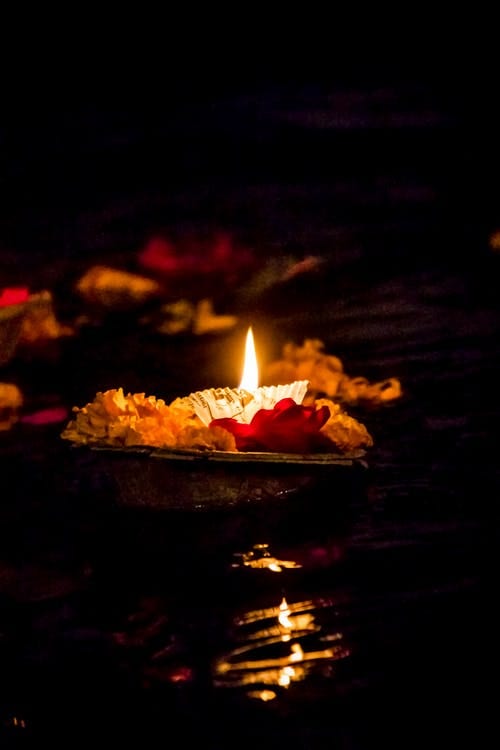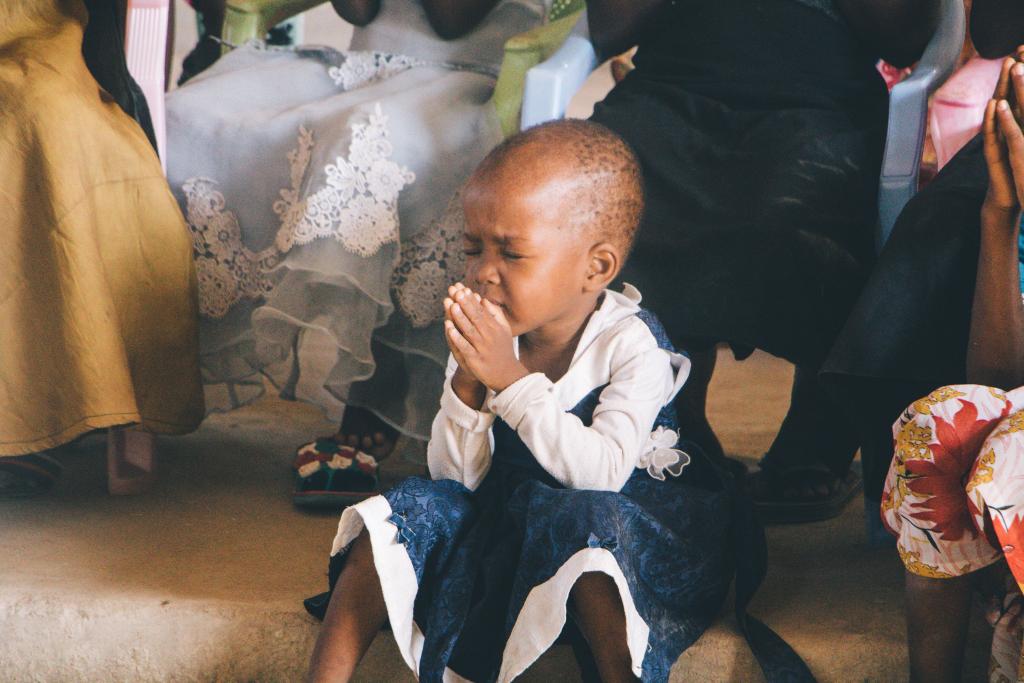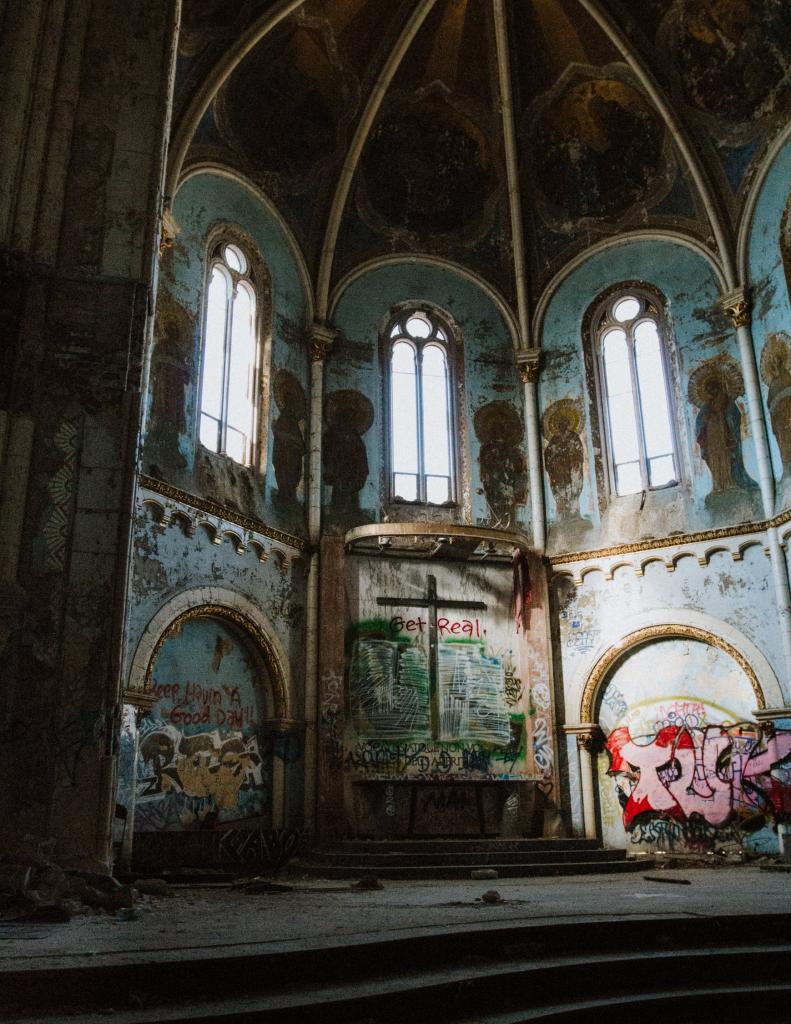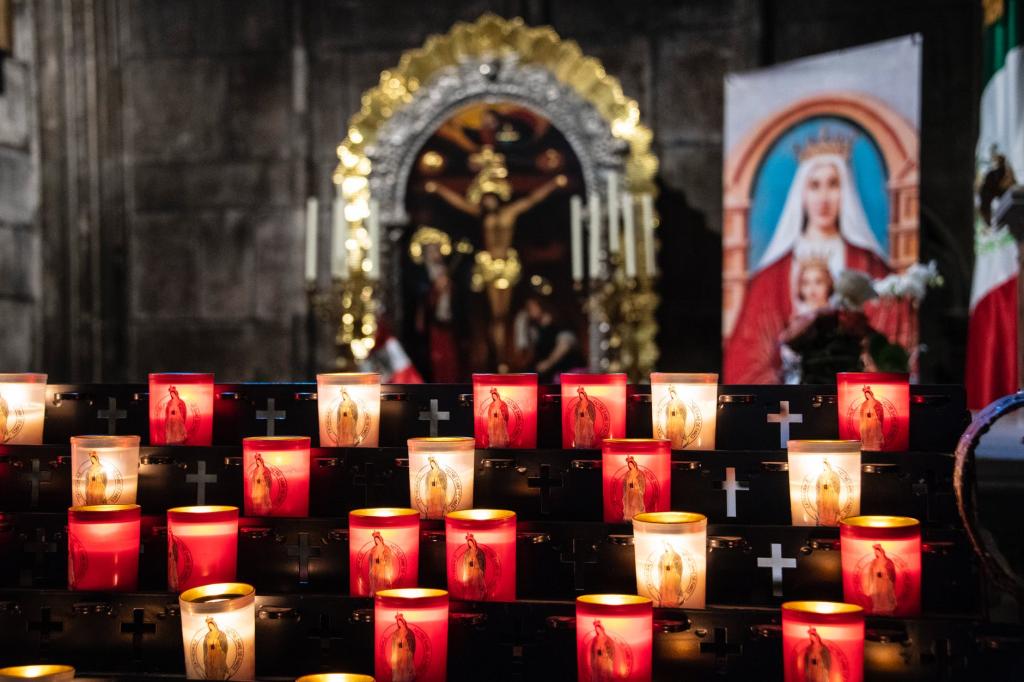Source: Being.the.traveller for pexels.com
In the third post on my series about non-European saints, I present saints from the continent of Asia.
(You can find the other two here: American saints and African saints.)
The history of Christianity in this part of the world is an interesting one as some areas, such as India, contain Catholic communities centuries older than those in the America’s. However, there are also Asian and Oceanic countries whose Catholic communities are primarily made up of modern converts, such as Myanmar and Papua New Guinea.
I’ve done my best to include a wide variety of saintly examples: martyrs like Isidore Ngei Ko Lat, priests and religious like Vicente Liem de la Paz and Rani Maria Vattali, married people like Xu Guangqi, single people like Satoko Kitahara, and children like Darwin Ramos. Their stories are varied in details and circumstances but constant in their witness.
May these holy people give us the courage to continue our own faith journeys as best we can during this difficult time!
St. Mark Ji Tianxiang (Chinese: 紀天祥)
Mark is a truly encouraging example for anyone who has struggled with addiction. The Chinese father and husband was also a wealthy doctor who suffered from a stomach ailment. He treated it with opium and soon became addicted. Although Mark had a strong Catholic faith, he was unable to receive the sacraments for decades because he struggled with substance addiction. At the time, there wasn’t a clear understanding that addiction is an illness rather than a sin. Thankfully, psychology and Church teaching have both progressed since then, but at the time, Mark was considered the worst sinner. His confessor once instructed him never to return to confession until he’d given up the drug completely. Despite being barred from receiving, Mark remained true to his faith even when given the chance to apostatize. He was beheaded by the Boxers in 1900. Many said that he sang the litany to the Blessed Virgin while being led to his death. For more information about Mark
St. Anna Pak Agi (Korean: 박아기 안나)
Anna is one of 103 Korean martyrs who remained firm in their faith despite the persecution they faced. She was born into a Catholic family and raised in the faith, unlike many Koreans at the time who were converts. Although she had difficulty learning prayers and doctrine, Anna had a great desire to love others and love God: “Since I cannot know my God as I should desire to do, I will at least endeavor to love Him with all my heart.” It was with this love that Anna often meditated on the Passion of Christ. She married a Catholic man named Francis Tae Mun-haeong when she was 18 years old. They had several children together and raised them in the faith. Her devotion to her family was severely tested when she, her husband, and oldest son were all arrested and pressured to apostatize through torture. Despite her husband and son faltering, Anna refused to deny her faith. She was placed in prison by authorities. Family members and friends begged her to change her mind in order to be released, but Anna remained steadfast and encouraged them to repent of their apostasy. After three months in prison, she was beheaded at the age of 57. For more about Anna
St. Vicente Liem de la Paz
Born Phạm Hiếu Liêm to parents who were members of the Tokinese nobility, Vicente lived in what is now modern day Vietnam. He was given the name Vicente Liem at the time of his baptism and raised Catholic. With four other native Tokinese men, Vicente was sent to the Philippines to study for the priesthood. He entered the Dominican order in 1753 and five years later was ordained a priest. A year later, Vicente returned to his home country and ministered to his people as a teacher and priest. His work was noticed by local authorities who didn’t share his faith. In 1773, they arrested Vicente and put him in prison with another Dominican priest, a Spaniard named Jacinto Castañeda. After their trial before the king, the two priests were beheaded on November 7th. Vicente was canonized by Pope John Paul II in 1988. He is considered the first Vietnamese martyr for the faith. For more about Vicente
Blessed Justo Takayama Ukon (Japanese: ジュスト高山右近)
Justo was given the name Hikogorō at birth by his samurai father Takayama Tomoteru. Because he was the eldest son, Justo followed in his father’s footsteps and prepared to inherit the family castle and legacy. When he was 12 years old, Justo’s father converted to Catholicism after meeting European missionaries. The young Japanese heir was renamed Justo at his baptism but didn’t embrace the faith in his heart. Years later, in accordance with Japanese tradition, he was given an additional name, Shigetomo, after completing a coming-of-age ceremony in 1571. This coming-of-age ceremony included a duel to the death, in which Justo killed his opponent. He continued to pursue the life of a daimyō (feudal lord), marrying in 1574, and starting a family. When the ruling class in Japan became hostile to Christianity and expelled all European missionaries from the country in 1587, most Catholic daimyōs renounced Christ in order to remain in Japan. However, Justo had a change of heart and refused to give up his faith. He was protected for several decades until finally forced to leave Japan for the Philippines in 1614. Justo died after suffering a fever in early February of 1615. He was given a Christian burial with full military honors. For more information about Justo
Blessed Nicholas Bunkerd Kitbamrung (Thai: นิโคลาส บุญเกิด กฤษบำรุง)
(January 31, 1895 – January 12, 1944)
Father Nicholas was very influential among the persecuted religious minority in his native Thailand. His parents, Joseph Poxang and Agnes Thiang Kitbamrung, converted to Catholicism from Buddhism and raised their six children in the faith. Nicholas began studying for the priesthood in his early teens. He was finally ordained at the Catholic cathedral in Bangkok two decades later. He worked as a parish priest and assisted Salesian missionary priests by teaching them his native Thai. During the Second World War, anti-Catholic sentiment grew throughout the region as Southeast Asians viewed the faith as “unpatriotic” and “Western”. Nicholas continued to serve his fellow Thais and stand up for their right to practice their faith until he was arrested on January 12th of 1941. He was accused of collaborating with foreigners and fighting against the Kingdom of Thailand. The faithful priest was sentenced to 15 years in prison. While in prison, Nicholas continued his work as a teacher and baptized over sixty fellow prisoners. Praying the rosary was a personal comfort for him. After three years in prison, he contracted tuberculosis and died at the age of 48. For more about Nicholas
Blessed Isidore Ngei Ko Lat
(September 17, 1918 – May 24, 1950)
Unfortunately, not much is known about Isidore before his life as a catechist. His parents, who were Burmese farmers, died when he was young, so his aunt and uncle cared for him until he reached adulthood. He was raised as a Catholic and wanted to serve God. He left the seminary after studying for six years at the outbreak of World War II. Isidore returned to his village and worked as a catechist. When Italian missionary Father Mario Vergara arrived in 1948, Isidore volunteered to assist him, teaching and interpreting in the local dialect. The pair’s hard work made them targets of anti-Catholic Baptists, who resented their success in converting the people and advocating for peace in the midst of tribal conflicts. Isidore and Mario were killed by the Baptists when attempting to rescue another catechist in 1950. Isidore became the first Burmese person to be beatified in 2014 by Pope Francis. For more about Isidore
Blessed Rani Maria Vattali
(January 29, 1954 – February 25, 1995)
At birth, Rani Maria was given the name Mariam in honor of the Virgin Mary. She was raised with her six siblings in the Syro-Malabar Rite in southern India. In 1971, she and her cousin entered the Franciscan Clarist Congregation, the same religious order that fellow Indian Saint Alphonsa joined. There, Mariam took the religious name Rani Maria and served the order as a teacher in various locations until her final vows in 1980. She also gained a degree in sociology and worked as a social worker. She was constantly looking to improve the lives of the poor in the diocese of Indore, a region in which the Christian population is largely in the minority. Unfortunately, her outspokenness regarding social justice in the community got her in trouble. Landlords and moneylenders who exploited the poor were angry with Rani Maria and hired a hitman to kill her. On February 25th of 1995 Rani Maria was stabbed to death by Samundar Singh while riding a bus filled with passengers. Singh, a Hindu, was imprisoned for the murder but later released for good behavior. He was forgiven by Rani Maria’s family. Rani Maria was beatified in 2017. For more about Rani
Venerable Francis Xavier Nguyễn Văn Thuận
(April 17, 1928 – September 16, 2002)
Although most of Thuận’s time as a Vietnamese bishop was spent in prison or in exile, he still worked hard to lead his people in the faith. Thuận grew up in a Catholic family, the nephew of the former president of South Vietnam. He felt drawn to the priesthood and was ordained a priest in 1953. After several years of pastoral work, he studied in Rome, eventually graduating in 1959 with a doctorate in canon law. He worked for several years as a rector and faculty member in the archdiocesan seminary of Huê. Pope Paul VI named Thuận the bishop of Nha Trang in 1967. Six days after being promoted as the coadjutor (assistant) archbishop of Saigon (now Ho Chi Minh City), the city was captured by the North Vietnamese Army, and Thuận was arrested. Because of his religious and family connections, Thuận wasn’t given a trial but thrown into prison by the communist government. His detainment, which included nine years of solitary confinement, began in 1975 and lasted until his release in 1988. During this time, he wrote many letters, which he smuggled out of prison, for the Vietnamese people. These letters and prayers were circulated throughout the Catholic community and later compiled into books. Some jailers took pity on the bishop and allowed Thuận to construct a small crucifix out of scraps of wire and pieces of wood. After his release, he was placed on house arrest in Hanoi. In 1991 the government gave Thuận permission to travel to Rome. However, he was not allowed to return to his home country. While in exile, Pope John Paul II named him a cardinal in 2001. He died from cancer in 2002. For more about Thuận
Venerable Satoko Kitahara (Japanese: 北原 怜子)
(August 22, 1929 – January 23, 1958)
Satoko was born and raised in Tokyo, Japan with her brother and three sisters. Her parents were descended from the Japanese aristocracy and raised their children in the Shinto religion. During World War II, she worked with her mother and siblings in the airplane warehouse. Satoko became disillusioned, both with her country as well as her childhood religion. After the war, she completed her education and met some Mercedarian sisters, some of whom were Japanese. Her curiosity about the nuns led her to begin taking catechism courses until she formally converted in 1949. She chose Elizabeth as her baptismal name and Marie as her Confirmation name. Although disappointed that she was unable to enter religious life due to poor health, Satoko soon found her true calling. In 1950 she met a Polish Franciscan named Brother Zeno Zebrowski who had a ministry working with the poor and destitute. He invited Satoko to join him in his work. Together, they worked in the slums of Tokyo with those who had been displaced by the war, including many orphans. Satoko decided that, in order to truly minister to these people, she needed to live like them. She gave up her status and family wealth, choosing instead to live in the slums as a rag-picker. She died from tuberculosis in 1958. Pope Francis named her a venerable in 2015. For more about Satoko
Servant of God Xu Guangqi (Chinese: 徐光啓)
(April 24, 1562 – November 8, 1633)
Xu is best known for his accomplishments as a mathematician, researcher, scientist, writer, and politician. However, his Catholic faith was influential to the point that he has been called one of the “Three Pillars of Catholicism” in China. Xu was born to a farming family and lived during the Ming Dynasty in Shanghai. He married at the age of 19 and had a son, Xu Ji. As an adult, he worked as a scholar-official, a politician appointed by the emperor. This status gave him access to explore various areas of study including agriculture, military, and astronomy. He first encountered Catholicism in 1596, but, being a scientist, he thoroughly researched and studied the faith before converting in 1603. Xu took Paul as his baptismal name. Several years prior to converting, he had met Jesuit missionary Fr. Matteo Ricci (1552–1610), who would become his friend and collaborator. Together, they translated several important Confucian texts into Latin from Chinese and Western texts into Chinese, working to bridge the language divide between their two cultures. The two also helped convert many friends and family members. Xu used his influence in the community to establish a Catholic church in 1609 and to hide foreign missionaries and priests during a period of persecution in China. In the political sphere, he publicly defended the Jesuit missionaries. His granddaughter, Candida Xu, continued his legacy by sustaining the Catholic community in China after his death. For more about Xu
Servant of God Darwin Ramos
(December 17, 1994 – September 23, 2012)
Poverty prevented Darwin from attending school but not from a life of prayer. Darwin was born into poverty in the slums of the Philippine capital of Manila. His mother worked as a laundry worker while his father was an alcoholic. Darwin and his sister Marimar worked as waste pickers, going through the garbage looking for anything of value. While living on the streets with his parents and eight siblings, Darwin began to show signs of an illness called Duchenne muscular dystrophy, which results in gradual weakening of muscles. Darwin’s father took advantage of the boy’s disability and used him to beg for money on street corners. In 2006, educators from the Tulay ng Kabataan Foundation found Darwin and offered to take him in where he’d receive medical care for his disability. At the nonprofit organization’s facilities, Darwin encountered other disabled street children as well as Catholicism. He entered the Church at the age of 11 and embraced the faith wholeheartedly. Although his health steadily declined, Darwin was always a bright spot in the lives of the other children and staff at the foundation. He constantly encouraged and prayed for the other children despite his own difficulties. At one point, he told the priest of the Foundation: “You know Father, I think Jesus wants me to hold on until the end, just like he did.” Darwin finally died at the age of 17 after three intense days of suffering, much like Christ in his Passion. His cause for sainthood was opened in 2019. For more about Darwin
Servant of God Thomas Cooray
(December 28, 1901 – October 29, 1988)
Thomas is the first person of Sri Lankan descent to be considered a saint. He was born in Negombo to a poor but religious family. He attended seminary both in his home country and Rome before being ordained a priest in 1929. Prior to his ordination,Thomas joined the Oblates of Mary Immaculate, a missionary religious order. In addition to his religious studies, he also enjoyed learning about plants and gained a degree in botany. He worked as a teacher, university chaplain, and rector of the seminary until 1945 when he was appointed as a bishop. Two years later, he was named the Archbishop of Colombo, the first native-born Sri Lankan to have that title. As the archbishop he worked hard to foster ecumenical and peaceful dialogue between Buddhists and Christians in Sri Lanka. Thomas also attended the Second Vatican Council and supported the traditionalist minority. After twenty-nine years as an archbishop, he was named a cardinal, the first native Sri-Lankan to have this honor, and participated in the conclaves that elected Pope John Paul I and Pope John Paul II. Throughout his life, he had a reputation for being a man of deep prayer and contemplation, often spending hours in the chapel. Thomas died at the old age of 86 and is buried at the Basilica of Our Lady of Lanka. For more information about Thomas
Servant of God Takashi Nagai (Japanese: 永井 隆)
(February 3, 1908 – May 1, 1951)
Takashi’s affluent family was very educated with many doctors trained in both Western and Eastern medicine. He was brought up in the Shinto religion of Japan. While attending Nagasaki Medical College in 1930, his mother died suddenly from a brain hemorrhage. He began reading the writings of Catholic philosopher Blaise Pascal, trying to make sense of his grief. His host family, the Moriyama’s, provided another religious influence during his college experience. They invited Takashi to attend his first Mass during Christmas of 1932, the year he graduated from medical school. He continued to read and consider Catholicism while serving in the military the following year. Pascal’s words finally pushed Takashi to make his decision: “There is enough light for those who only desire to see, and enough obscurity for those who have a contrary disposition.” Takashi converted to Catholicism in June of 1934, choosing Paul as his baptismal name. Several months later, he married Midori Moriyama, the daughter of the family he lived with during his college years. The couple had four children together, and Takashi became a member of the Society of St. Vincent de Paul. Several years after his conversion, he returned to the military and utilized his medical skills as a surgeon, finally returning to Japan in 1940. A year later, World War II began, and Takashi continued his medical studies while also working as a radiologist despite the danger of air raids on the city. Because of his work and constant exposure to radiation, he developed leukemia, which was discovered in June of 1945. On August 9th of 1945, Takashi was in his office at the medical college when the atomic bomb was dropped on Nagasaki. Despite being seriously injured, the brave doctor worked to treat the wounded. In the aftermath of the blast, he mourned the loss of his wife while slowly succumbing to illness. Takashi built a little hut from the wreckage of his home and continued to live and pray there until his death in 1951. For more about Takashi
Servant of God Teofilo Camomot
(March 3, 1914 – September 27, 1988)
Teofilo was born into a large Catholic family in Carcar, the southern Philippines. His parents, Luis Camomot and Angela Bastida, exposed him to a very religious upbringing from a young age. He was very compassionate as a child and often asked for extra food to give to the poor people he encountered. Although he had wanted to be a farmer like his father, Teofilo (or “Lolong” as he was known by friends and classmates) decided to enter the seminary like his older brother. He was ordained in December of 1941 and celebrated his first mass as a new priest in his home, rather than his family parish, due to World War II. After serving as a parish priest for over a decade, he was appointed as the auxiliary bishop of Jaro in 1955. In addition to carrying out his responsibilities in the diocese, Teofilo also attended several sessions of the Second Vatican Council and founded an order of religious sisters. At one point, he actually sold his pectoral cross (a sign of his authority as a bishop) in exchange for money to buy food for the poor. He resigned as auxiliary bishop in 1970 due to health problems but continued to serve people. His generosity was so great that staff at the rectory began to complain about the number of poor people who would line up outside, waiting for a chance to receive food from the aging priest. On September 27th of 1988 Teofilo died unexpectedly in an automobile accident. Thousands attended his funeral, not because of his eloquent words but his compassion and heartfelt actions throughout his life. For more about Teofilo
Blessed Peter To Rot
(March 5, 1912 – July 7, 1945)
The only non-European saint from Oceania lived in what is today Papua New Guinea. Peter was born to Angelo Tu Puia (the village chief) and Maria Ia Tumul, who were Catholic converts. He was brought up in the faith with five siblings and learned catechism from his father. Although he considered the priesthood at one point, Peter realized that marriage was his vocation. In 1936, he married Paula Ia Varpit, and the couple went on to have three children together. Sadly, only one child survived to adulthood. Peter trained as a catechist and assisted his island’s parish priest in serving the local people. He enjoyed his work and even took over leadership of the parish community in 1942. When the island was invaded by the Japanese, they imprisoned all foreign missionaries, which included Peter’s parish priest. Peter constructed a hidden church when the church building was destroyed and continued ministering to the people. The Japanese finally became tired of Peter’s witness and arrested him on Christmas of 1944. After he confessed that he was continuing his work with the church, they locked Peter in a small, windowless cell. Although his wife begged him to give up being a catechist and perhaps save himself, Peter calmly told her that he was willing to die for the faith. On July 7th of 1945 he was strangled to death in his cell at the age of 33. For more about Peter
All you holy men and women of Asia and Oceania, pray for us!
Photo credit: Being.the.traveller for pexels.com












